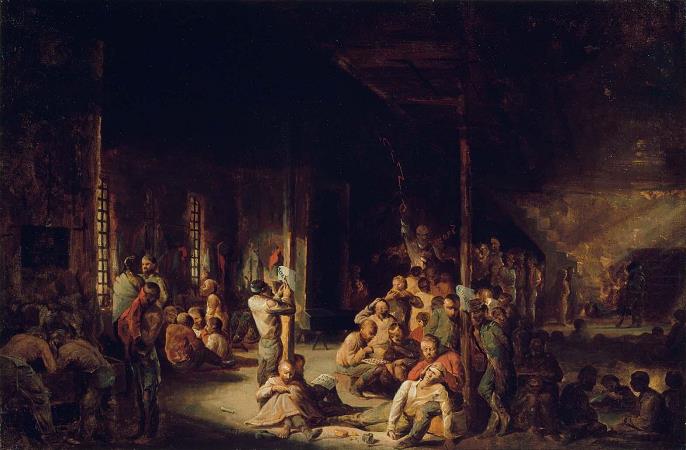David Gilmour Blythe (1815 - 1865). David Gilmour Blythe was a self-taught American artist best known for paintings which satirically portrayed political and social situations. Blythe was also an accomplished portraitist and poet. He is widely regarded as the Pittsburgh region's pre-eminent nineteenth-century painter. Blythe was born in East Liverpool, Ohio on May 9, 1815 to poor parents of Scots and Irish ancestry. After a childhood in a log cabin by the Ohio River, at the age of 16, Blythe moved to Pittsburgh, Pennsylvania. There he apprenticed himself to woodcarver Joseph Woodwell. After his apprenticeship, Blythe returned to East Liverpool for a time and then joined the United States Navy in 1837. His service on the USS Ontario included voyages to the Caribbean islands and Mexico. After his discharge from the Navy, Blythe returned to East Liverpool and took up work as an itinerant portrait painter. Always restless, Blythe traveled widely from Baltimore to Philadelphia and perhaps as far as New Orleans. Other than his stint with Woodwell, Blythe had no known artistic education or training and his early East Liverpool portraits were ungraceful and stiff. Despite this dearth of formal training, Blythe's proficiency, sophistication and finesse as an artist grew. Blythe fancied himself a poet as well as a painter. His early poetry was written in East Liverpool and is generally of a sentimental, simple nature. In the late 1840s Blythe moved from East Liverpool to Uniontown, Pennsylvania, probably due to his courtship of Julia Ann Keffer. The couple had been acquainted since the mid-1840s. Julia's family had relocated to Uniontown sometime around 1847. Julia and David were married in Pittsburgh's Roman Catholic cathedral on September 30, 1848 and set up residence in Uniontown. Blythe established a living as a portraitist in Uniontown, and a large number of his early portraits from that period survive. They are generally in the same stiff manner as his early East Liverpool portraits. In addition to painting, Blythe was commissioned to carve a large poplar statue of Lafayette for the cupola of the Uniontown, Pennsylvania courthouse. Blythe also invested a great deal of time and energy in painting a panorama — an early forerunner to motion pictures. Blythe's Great Panorama of the Allegheny Mountains was painted on a canvas roll seven feet tall and about 300 feet long. The panorama contained twenty or so scenes picturing eastern locales of aesthetic or historical importance, including Monticello, Fort Necessity, Harper's Ferry, General Braddock's grave, and others. Panoramas toured various cities and were displayed in rented halls. The canvas was mounted on rollers and each scene was displayed to the paying audience accompanied with narration, and sometimes with music. Subject matter was usually biblical, historical, or scenes of exotic foreign locales such as Egypt. Unfortunately, Blythe's prodigious labors on his panorama came to naught. Though Blythe traveled to exhibit his panorama in Baltimore, Pittsburgh, East Liverpool and a few other locales, it failed to attract interest sufficient to continue touring. Blythe dropped out of the ownership group after the first couple of performances and the panorama eventually disappeared. Between 1850 and 1852, Blythe suffered several profound losses in addition to failure of the panorama. Both his father and his wife Julia died. After another statue project in nearby Green County fell through, the Uniontown newspapers published Blythe poems in which he referred to Greene County as "a sow grown fat with buttermilk and meal. A Greene County newspaper then published a retort by a local poet — the son of the newspaper's publisher — in which Blythe was named too much of a drunk to be worth anyone's attention. Blythe's impudent response was a letter in which he called the poet pumpkin-headed and his father another growling, whining hound.
more...




